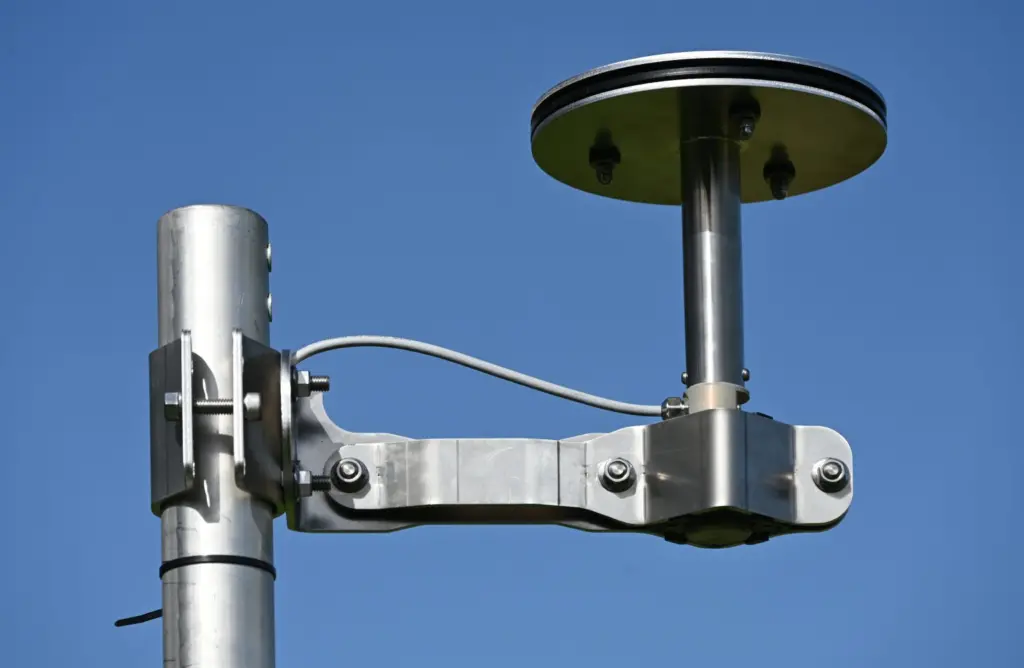
HF4 HailFlow sensor for Hail Monitoring
Non-mechanical hail sensor
The HF4 HailFlow sensor for Hail Monitoring is a non-mechanical hail sensor. An acoustic instrument, the HF4 enables the
- detection of hail
- characterisation of hailstone size
The sensor is able to distinguish between 15 classes of hailstone diameter, ranging from 0.5 to 8 cm, with a capability of counting up to 25 solid impacts per second.
The HF4 is compatible with any SDI-12 logger or IoT Node (such as the MFR-Node or S-Node).
HF4 HailFlow sensor for Hail Monitoring
SKU: HF4
Categories: IoT Solutions for Environmental Monitoring, Rainfall Sensors, Weather Stations
Brand: ISAW
Features
Specifications
Case Studies
Resources
Features
The HF4 HailFlow Sensors is:
- Non obstructable
- Instrument with no mobile parts – totally sealed acoustic instrument
- Universal mounting kit available
- Omni-directional – even under the highest winds
- Corrosion free and resistant to the highest winds and the most extreme conditions
- Plug-and-Play or totally configurable – microcontroller inside
- Can be connected to almost any external unit
- SDI-12 and IoT compatible – internal memory
With the hemispherical surface, the measurements cannot be obstructed by dust, dirt, or leaf matter removing the need for ongoing maintenance.
Data output options include:
- SDI-12
- RS485 (accessory required)
- Analogue (0-2.5V or 0-5V)
Specifications
Measurement characteristics
| Measuring surface | 200 mm outer diameter disc |
| Precipitation detected by the sensor | Solid only (hail). 15 classes, from 0.5 cm (minimal detectable diameter) to >7.5 cm (possible saturation of the instrument). Counting of the number of hailstone impacts up to 25 impacts per second. |
| Measurement Accuracy | For a given controlled elastic momentum impact (such as spheres of equal diameter, density, Young modulus, falling speed and incidence angle), the response of the sensor varies typically by ± 10%, depending on the spatial position of the impact on the disc and on the sensor (± 10% variability between two sensors). |
Voltage ranges and measuring scales
| Voltage outputs | Continuous analogue voltage or pulse analogue voltage, user selectable +0 to +2.5V or +0 to +5V are available. Pulse threshold, integrator timeout and duration are also user selectable. The continuous analogue voltage persists on the outputs so that output voltages can be read at any time. |
| Rain intensity scaling | Sensitivity @voltage range +2.5V: [10 mV/(mm/h)] i.e. +2.5V corresponds to 250 mm/h |
| Sensitivity @voltage range +2.5V: [100 mV/(hits/s)] i.e. +2.5V corresponds to 25 hits/s | |
| Sensitivity @voltage range +5V: [200 mV/(hits/s)] i.e. +5V corresponds to 25 hits/s |
Construction and Dimensions
| Material | Stainless steel, plastic and anodized aluminium (breakdown voltage > 40 V/μm) |
| Installation | Universal mounting kit provided (ordering reference: RFBRA) |
| Weight | 3.2 kg without mounting kit 5.4 kg with mounting kit |
| Dimensions (HxWxD) | 260 mm x 450 mm x 200 mm with mounting kit |
Power
| Voltage | 6 V to 30 V DC (9.6 V and 16 V DC in case of powering through the SDI-12 terminals) |
| Current | < 1 mA in stand-by mode and 20 mA max in acquisition mode. For a typical nominal duty-cycle of 10%: 2.1 mA (20 mA for duty-cycle of 100%). |
Outputs
| Analogue | Pulse and continuous (and persistent) voltages, 0-2.5V or 0-5V |
| SDI-12 | Yes, 1.3 certified (fully complies with the NR Systems SDI-12 Verifier) |
| Serial 3V3 TTL | Yes |
| Modbus RTU (RS485) | Yes, with the Modbus adapter accessory |
Environmental conditions
| Temperature range | -40°C to +80°C. (an even operate over this range.) |
| Relative humidity | 0 to 100% |
| Protection | IP67, survive to 1 m temporary immersion in salt water |
| Standards | EN 61326-1: 2013, CE compliant. 2014/30/EU, CE compliant |
Case Studies
-
No case studies found
Resources
No resources found
